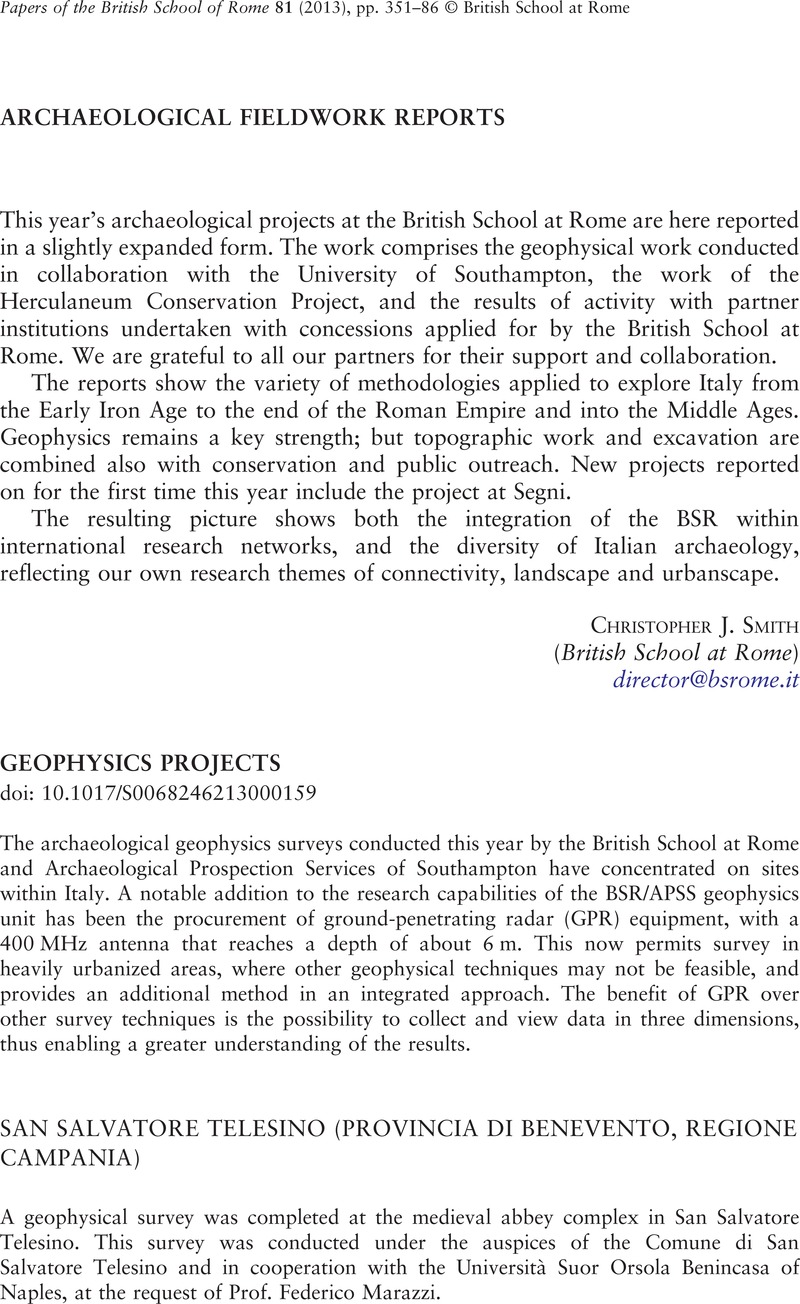No CrossRef data available.
Article contents
Geophysics Projects
Published online by Cambridge University Press: 26 September 2013
Abstract

- Type
- Archaeological Fieldwork Reports
- Information
- Copyright
- Copyright © British School at Rome 2013
Footnotes
This year's archaeological projects at the British School at Rome are here reported in a slightly expanded form. The work comprises the geophysical work conducted in collaboration with the University of Southampton, the work of the Herculaneum Conservation Project, and the results of activity with partner institutions undertaken with concessions applied for by the British School at Rome. We are grateful to all our partners for their support and collaboration.
The reports show the variety of methodologies applied to explore Italy from the Early Iron Age to the end of the Roman Empire and into the Middle Ages. Geophysics remains a key strength; but topographic work and excavation are combined also with conservation and public outreach. New projects reported on for the first time this year include the project at Segni.
The resulting picture shows both the integration of the BSR within international research networks, and the diversity of Italian archaeology, reflecting our own research themes of connectivity, landscape and urbanscape.
Christopher J. Smith
(British School at Rome) director@bsrome.it
References
This year's archaeological projects at the British School at Rome are here reported in a slightly expanded form. The work comprises the geophysical work conducted in collaboration with the University of Southampton, the work of the Herculaneum Conservation Project, and the results of activity with partner institutions undertaken with concessions applied for by the British School at Rome. We are grateful to all our partners for their support and collaboration.
The reports show the variety of methodologies applied to explore Italy from the Early Iron Age to the end of the Roman Empire and into the Middle Ages. Geophysics remains a key strength; but topographic work and excavation are combined also with conservation and public outreach. New projects reported on for the first time this year include the project at Segni.
The resulting picture shows both the integration of the BSR within international research networks, and the diversity of Italian archaeology, reflecting our own research themes of connectivity, landscape and urbanscape.
Christopher J. Smith
(British School at Rome) director@bsrome.it


